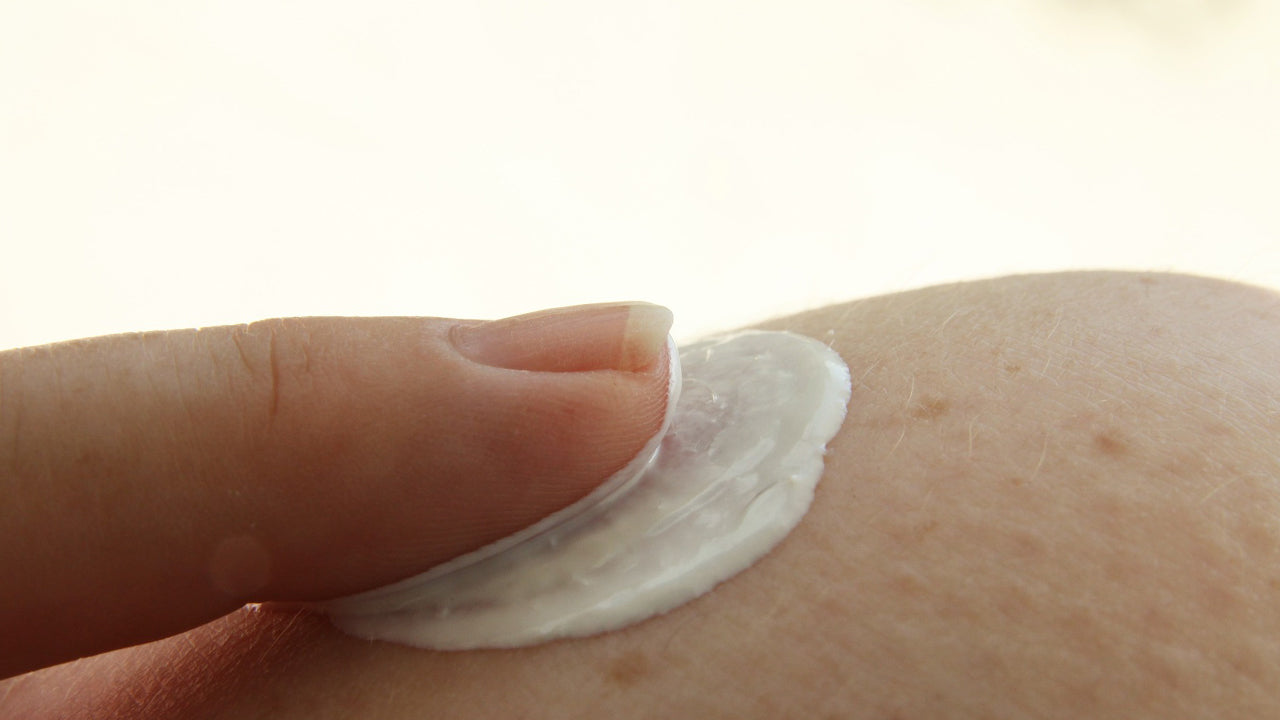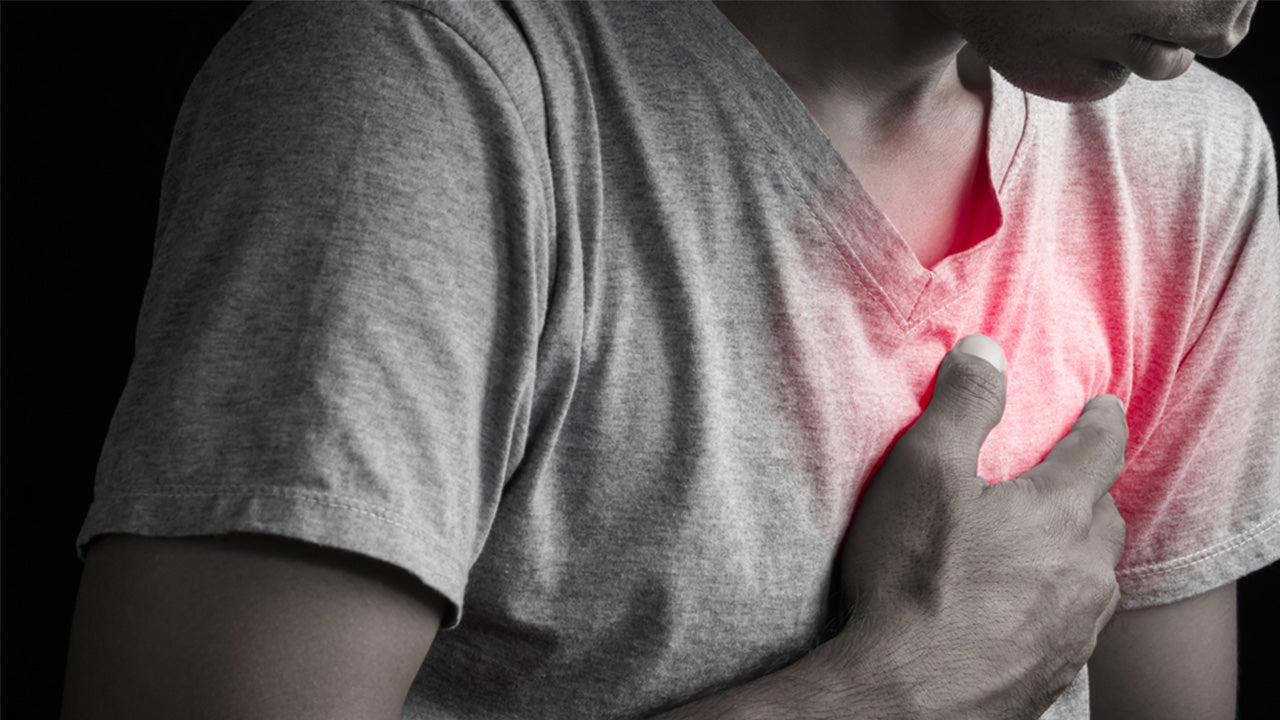Got Shingles? Here’s How to Treat Shingles at Home
 By: by Amino Science
By: by Amino Science

A red blistery rash, acute localized pain, fatigue, headache, and fever are just a few of the symptoms shingles sufferers face. You may have shingles if you are experiencing these or other unusual signs and had developed chickenpox in the past. We’re covering conventional treatments, as well as how to treat shingles at home to allay discomfort.
Seek immediate medical attention for proper medical diagnosis before employing self-care methods. Shingles, or herpes zoster, is a debilitating condition that can lead to other serious complications if not treated properly. While under adequate medical supervision, you can work to alleviate the excruciating pain and irritability typical of shingles outbreaks. Shingles pain relief is your main priority if you’ve got shingles.
What Is Shingles?
The varicella-zoster virus causes shingles, which is not life-threatening. This viral infection is also responsible for chickenpox, which many people develop as infants, children, or teenagers. Although incidences of chickenpox have decreased, likely due to an increase in vaccine usage to combat the virus, the number of shingles cases in adults is steadily increasing—a trend that continues to mystify the medical community. Some speculate that the rise may be due, in part, to an increase in shingles vaccines containing a weakened version of the virus that may still increase contagiousness.
When in contact with a contagious strain, children, pregnant women, and people with weakened immune systems are most susceptible to contracting the virus. If someone who has never developed chickenpox contracts the varicella-zoster virus, they may develop chickenpox and not shingles. After someone develops chickenpox, a portion of the virus lies dormant in nerve tissue near the spinal cord and brain for many years. Very little is known as to what causes the virus to reactivate and manifest as shingles later in life. It is estimated that one in three adults in the United States will develop shingles in their lifetime.
The contagious virus that causes shingles is usually transmitted through direct contact with someone who has open blistery lesions on the skin. Once the blisters have erupted, crusted over, and healed, contagiousness decreases significantly. Sufferers may feel pain, itchiness, or a tingling sensation in a localized region of the body—usually the torso area—1 to 5 days before the signature band-shaped shingles rash appears. The painful rash usually heals 2 to 4 weeks after the blisters scab over.
Anyone can develop shingles, but you are at increased risk of developing shingles if you are 50 years of age or older or have a compromised immune system. Half of the people aged 60 or older who suffer a shingles outbreak develop postherpetic neuralgia, a condition characterized by nerve damage and excruciating pain you may experience from the slightest touch. Postherpetic neuralgia can last months or years after the shingles rash has disappeared.
If a shingles rash develops around your eye (ophthalmic shingles), you may develop sores and scarring in the affected eye that can lead to eye complications, such as glaucoma and vision loss. Other possible complications associated with shingles are:
- Facial paralysis
- Ramsay Hunt syndrome, partial hearing loss, and deafness
- Vertigo
- Difficulty balancing
- Chronic earaches
- Bacterial infections
How to Spot Shingles
The symptoms of shingles usually begin with the onset of pain, with or without the visual cue of a shingles rash. Other shingles symptoms include:
- Numbness, tingling, burning
- Skin and light sensitivity
- Skin rash
- Blisters on one side of the body
- Itching
Some people also experience:
- Headache
- Fever
- Lethargy
Conventional Shingles Remedies
To limit the severity of shingles outbreaks and associated complications, it is important to seek immediate medical attention. Getting shingles vaccinations—like Shingrix or Zostavax—prior to developing shingles will not prevent you from contracting the varicella zoster virus, but they can decrease your risk for developing shingles or may decrease the duration of the illness.
Should you decide to take conventional drugs to treat shingles, there is an assortment of options, from over-the-counter drugs to stronger antiviral medications. Speak with a health care professional regarding a treatment plan that is right for you. But know that many of the prescribed pharmaceuticals may have serious side effects that can lead to unexpected consequences. For instance, Vicodin and OxyContin are popular opioid narcotic prescription painkillers that treat the intense aching and nerve pain that some shingles sufferers experience. However, these painkillers can be habit-forming, especially if you’ve previously experienced addiction problems. Furthermore, certain pharmaceuticals for shingles treatment may interfere with medications used to remedy other illnesses.
How to Treat Shingles at Home
According to the Centers for Disease Control and Prevention (CDC), hospitalization for shingles outbreaks is down. Thirty percent of people hospitalized for shingles usually experience more widespread outbreaks and subsequent pain due to weakened immune systems. Yet, armed with a healthy immune system, a strong support system, and a doctor’s remote care, you can successfully manage your pain and treat shingles at home.
Eat Good Foods, Avoid Toxins
During a shingles bout, you want to avoid anything that may further aggravate your discomfort. Illicit drugs and alcohol may temporarily numb your pain, but they can magnify possible long-term shingles complications, especially nerve damage.
Foods rich in the amino acid arginine but low in the amino acid lysine—such as nuts, seeds, soy, chocolate, oats, coconut, and white flour—may cause your shingles symptoms to linger. Fresh fish, poultry, and most vegetables usually contain a higher portion of lysine to arginine. You could also consider supplementing with an amino acid mixture formulated with an appropriate balance of all essential amino acids to keep the ratio of lysine to arginine optimal.
You can also boost your lysine and arginine intake with an essential amino acid supplement enriched with citrulline (an arginine precursor) and developed with aging in mind. Learn more here.
Choose foods rich in vitamins C, A, E, folate, and B6. Leafy-green vegetables, like kale and spinach, and citrus fruits are great sources of these vitamins. Avoid sugary, starchy, and processed foods that have little or no nutritional value. Junk foods can hinder your immune system and suppress proper healing.
Treat Skin, as Needed
Soothing skin care treatments, like cool compresses, should be applied to the affected area as often as needed. Herbal baths filled with cool water and chamomile can help calm irritated skin. Taking cool baths filled with colloidal oatmeal powder is an age-old shingles home remedy great for keeping blisters clean. Use a washcloth to dab sores with a combination of cool water and witch hazel topical astringent. Or make a paste of baking soda and corn starch. To dry your skin, pat, rather than rub, away excess dampness with fresh clean towels washed in mild, dye-free detergents. Doing so helps prevent further irritation and decreases the risk of bacterial infection.
Keep Skin Hydrated
Moisture-starved, cracked skin may further irritate painful skin sores. Calamine lotion is a soothing option to heavy creams and lotions that are often loaded with dyes, perfumes, and skin irritants. Use a cotton ball to dab a thin layer of calamine lotion around infected areas. Occupy spaces that maintain cool to mild, rather than humid, temperatures to avoid sweating.
Wear Loose-fitting Clothing
Expose your shingles rash to fresh air as much as possible. If necessary and to avoid spreading shingles, choose bandages that do not stick to the shingles lesions. Natural hypoallergenic materials, like cotton, tend to provide the most comfort. Avoid spraying your clothes and spaces with strong perfumes and chemicals that may irritate blistery sores.
Release Endorphins Naturally
Engage in easygoing activities that trigger the natural release of endorphins, which can have the same “feel good” effect on the body as morphine—a widely prescribed painkiller. Laughing, listening to pleasant music, deep-breathing exercises, undergoing light physical exercise, and administering aromatherapeutic treatments with vanilla and lavender herbs are ways to load your bloodstream with your body’s natural painkillers. Always consult your doctor before taking on any degree of physical activity.
Avoid Stress
An abundance of stress can exacerbate any medical condition. While you are recovering from a shingles outbreak at home, avoid stressful situations if at all possible. It’s a good idea to initiate contingency measures by calling on friends and relatives to handle your affairs at this time. Instead, retreat to your favorite quiet place and meditate while deep-breathing fresh air. Your mind should be as relaxed as possible so that you may focus on healing, and not chaos.
Secure a support system. Shingles pain can be debilitating, so don’t hesitate to ask your friends and family members for assistance. You may need help with menial tasks, like getting in and out of a bathtub, gathering medical supplies, shopping, grooming, or climbing a set of stairs. Talk about what you are experiencing with friends and loved ones. Suffering acute physical pain can cause long-term emotional damage, especially if you are forced to endure your illness alone.


Up to 25% off Amino
Shop NowTAGS: conditions natural cures
Join the Community
Comments (0)
Most Craveable Recipes




 833-264-6620
833-264-6620



















